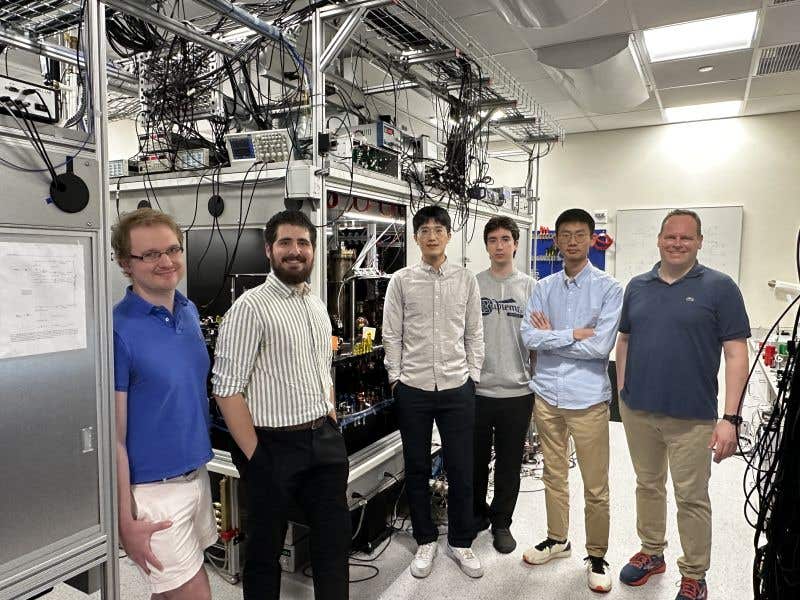TAR-200 implant achieves complete remission in 82% of bladder cancer patients
Slow-release TAR-200 device helps over 80% of high-risk bladder cancer patients avoid surgery and remain cancer-free for years.

An experimental slow-release device is showing unprecedented success against aggressive bladder cancer. (CREDIT: Shutterstock)
For people facing aggressive bladder cancer that no longer responds to standard treatment, options have often been grim—either undergo life-changing surgery to remove the bladder or try less effective therapies. Now, new research suggests there may be a powerful alternative that could allow many patients to keep their bladder and live cancer-free for years.
In a major international clinical trial, an experimental device called TAR-200 achieved complete remission in over 82% of participants with high-risk non–muscle-invasive bladder cancer (NMIBC) that had stopped responding to the common immunotherapy Bacillus Calmette-Guérin (BCG). Even more promising, nearly half of these patients remained cancer-free a year after starting treatment.
Dr. Sia Daneshmand, director of urologic oncology at Keck Medicine of USC and lead author of the study published in the Journal of Clinical Oncology, called the results “a breakthrough in how certain types of bladder cancer might be treated, leading to improved outcomes and saved lives.”
How TAR-200 Works
Unlike traditional bladder cancer treatments that deliver chemotherapy in a liquid form and are flushed out within hours, TAR-200 slowly releases its medication over weeks. The device, about the size and shape of a small pretzel, is inserted into the bladder during a brief procedure. It contains the chemotherapy drug gemcitabine, which seeps steadily into the bladder lining for three weeks before the device is replaced.
This slow-release system keeps the drug in contact with the cancer far longer than older methods, allowing deeper penetration into the bladder wall. “The theory was that the longer the medicine stays in the bladder, the more cancer it can destroy—and it appears that is exactly what’s happening,” said Daneshmand, who is also part of the USC Norris Comprehensive Cancer Center.
Patients in the study received TAR-200 every three weeks for six months, then once every three months for up to two years. Most saw their cancer disappear within about three months of starting treatment.
Related Stories
- Urine-powered nanorobots shrink bladder tumors by 90%, study finds
- Groundbreaking genetic test can predict bladder cancer years before diagnosis
The Clinical Trial Results
The SunRISe-1 trial, conducted at 144 medical centers worldwide, involved 85 patients with carcinoma in situ (CIS), an aggressive form of NMIBC. All had previously undergone BCG therapy, but their cancer had returned.
Of the patients treated with TAR-200 alone, 70 achieved complete remission. The median time patients stayed cancer-free was 25.8 months, and more than half of those who responded remained cancer-free for at least a year. After two years, about three-quarters had avoided bladder removal surgery.
By comparison, existing FDA-approved bladder-sparing treatments for this group typically achieve complete response rates of 41% to 62%, with shorter-lasting benefits.
A separate group of 52 patients with a different form of high-risk NMIBC saw a one-year disease-free rate of 70.2%.
Side Effects and Safety
TAR-200 proved to be well-tolerated. The most common side effects were mild urinary issues such as urgency, burning, and frequent urination, which usually went away within three weeks. Only about 13% of patients experienced serious side effects, and just 3.5% discontinued treatment because of them. No treatment-related deaths occurred.
Interestingly, when TAR-200 was combined with another immunotherapy drug, cetrelimab, the results were not as strong, and side effects were more common.
Why This Matters
Radical cystectomy—the complete removal of the bladder—is currently the standard treatment for BCG-unresponsive bladder cancer. While often effective, it comes with high risks, including a 90-day mortality rate of about 5% for all patients, which climbs to 15% for older adults. Recovery is challenging, and the surgery can have a significant impact on quality of life.
Despite its curative potential, fewer than 20% of eligible patients in the United States undergo bladder removal, often due to age, health conditions, or personal choice. That leaves many with few good options.
TAR-200 could change that, offering a treatment that is not only effective but also less invasive and easier to tolerate. The U.S. Food and Drug Administration has granted TAR-200 Priority Review, meaning it will fast-track the approval process.
Daneshmand, who has been studying this technology since 2016, said, “Our mission is to deliver cancer-fighting medications into the bladder that will offer lasting remission from cancer, and it looks like we are well on our way toward that goal.”
Other Bladder Cancer Studies
Researchers led by the Institute for Bioengineering of Catalonia (IBEC), alongside CIC biomaGUNE, IRB Barcelona, and UAB, have developed urea‑powered nanorobots capable of significantly shrinking bladder tumors in mice. These nanobots are composed of porous silica spheres roughly 450 nm in size, functionalized on their surface with the enzyme urease and a therapeutic radioisotope—specifically iodine‑131—designed for localized treatment of tumors. The urease catalyzes the decomposition of urea present in urine, generating motion via chemical propulsion that enables the nanobots to self‑propel and navigate within the bladder environment .
In both in vivo and ex vivo studies using an orthotopic mouse model of bladder cancer, these nanorobots demonstrated enhanced targeting efficacy. Positron emission tomography (PET) revealed an eight‑fold increase in tumor‑site accumulation compared to passive particles, and advanced microscopy techniques confirmed deep tumor penetration. Upon intravesical administration of a single dose of radio‑iodinated nanorobots, researchers observed a remarkable ~90% reduction in tumor volume in treated mice.
This study, published in Nature Nanotechnology, suggests that urease‑powered nanorobots hold promise as efficient, targeted delivery systems for radionuclide therapy in bladder cancer. By enabling active dispersion and tumor penetration, they could potentially reduce the duration of hospitalization, lower treatment costs, minimize patient visits, and overcome limitations of current intravesical therapies—such as recurrence and low therapeutic efficacy.
Practical Implications of the Research
If TAR-200 is approved, it could offer thousands of patients an effective bladder-sparing therapy that rivals or exceeds the success rates of more invasive treatments. This could mean fewer radical surgeries, less time in the hospital, and a better quality of life for those diagnosed with aggressive bladder cancer.
The device’s ease of use and manageable side effects also make it a promising option for older adults and those with health issues that make major surgery risky. Beyond bladder cancer, this slow-release drug delivery system might inspire similar approaches for other cancers and localized diseases where sustained exposure to a drug could improve results.
Note: The article above provided above by The Brighter Side of News.
Like these kind of feel good stories? Get The Brighter Side of News' newsletter.



